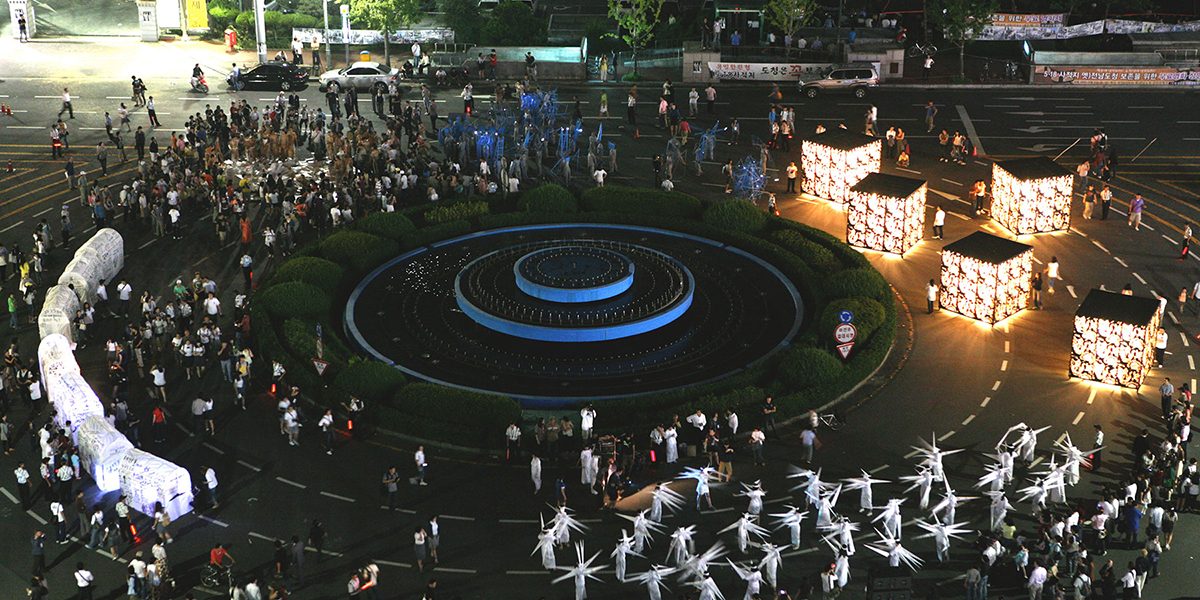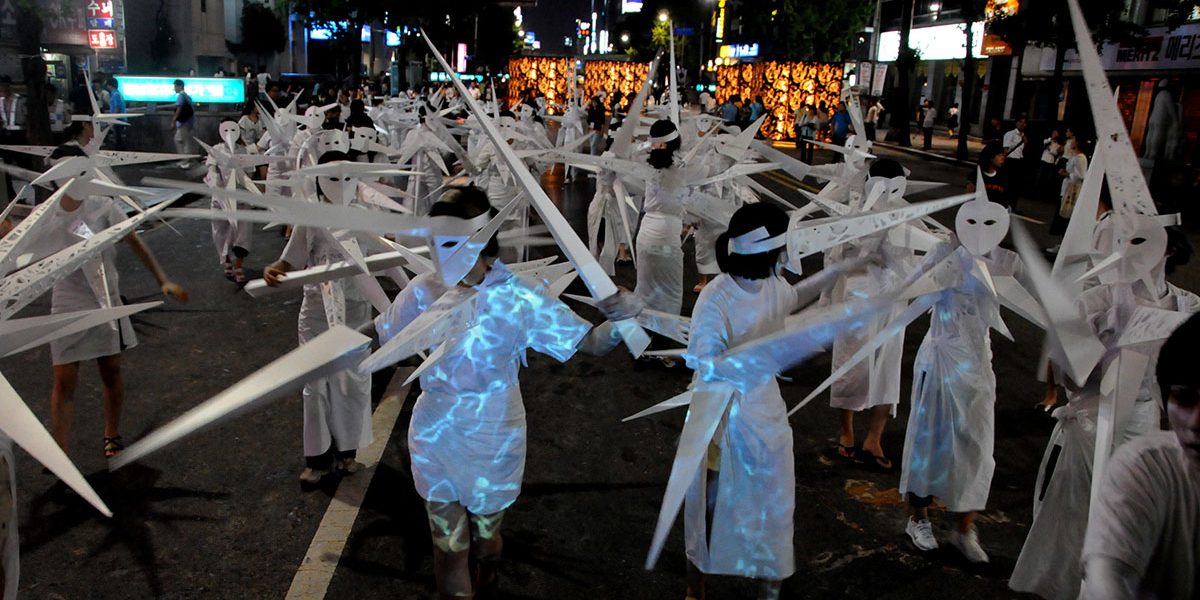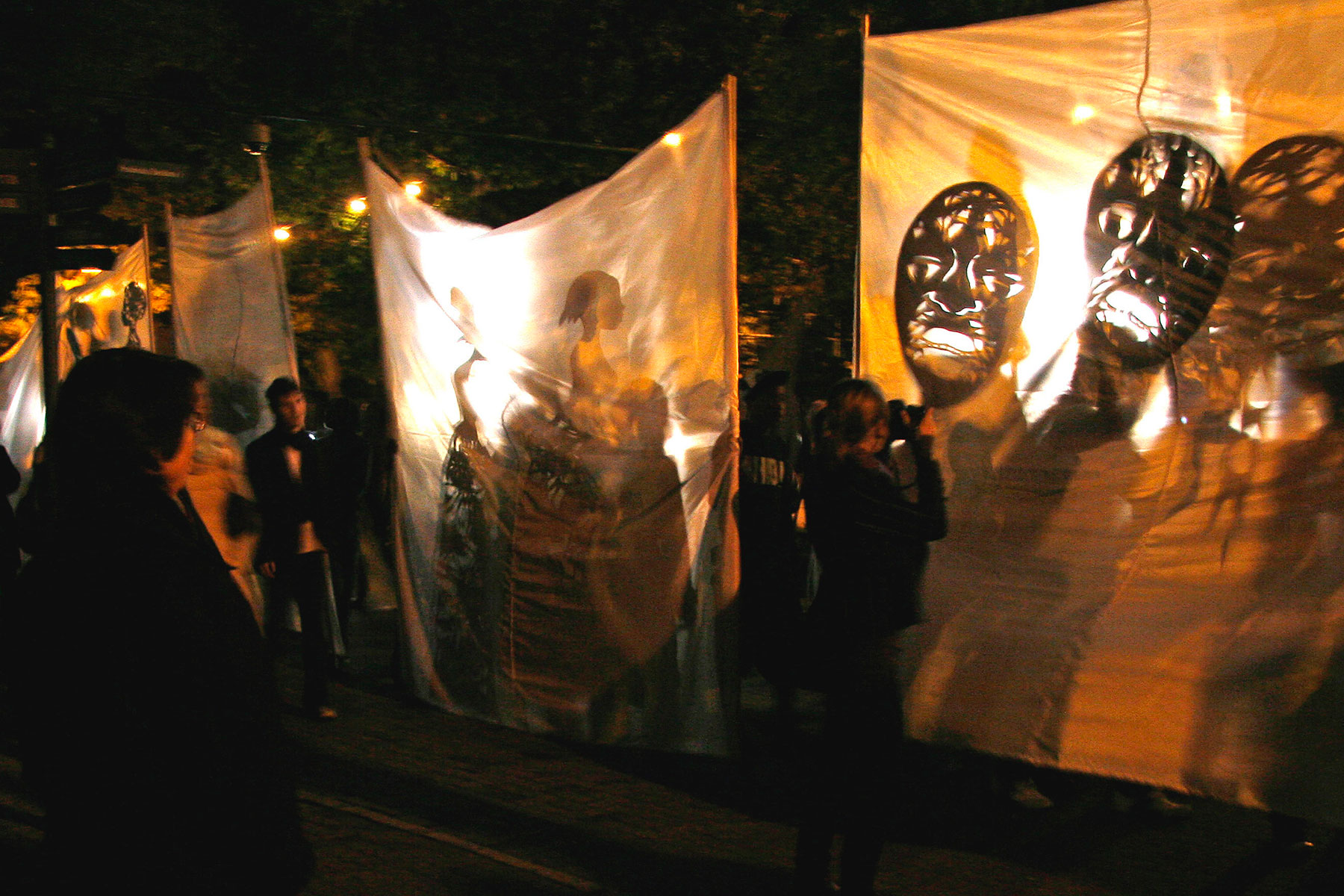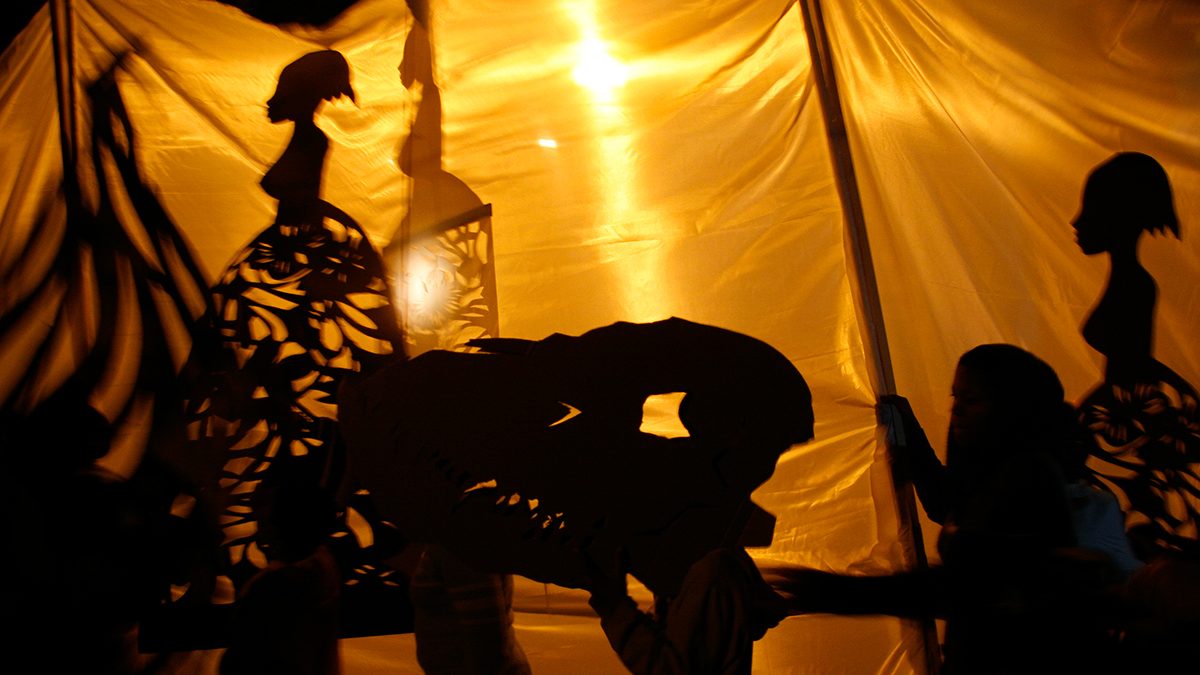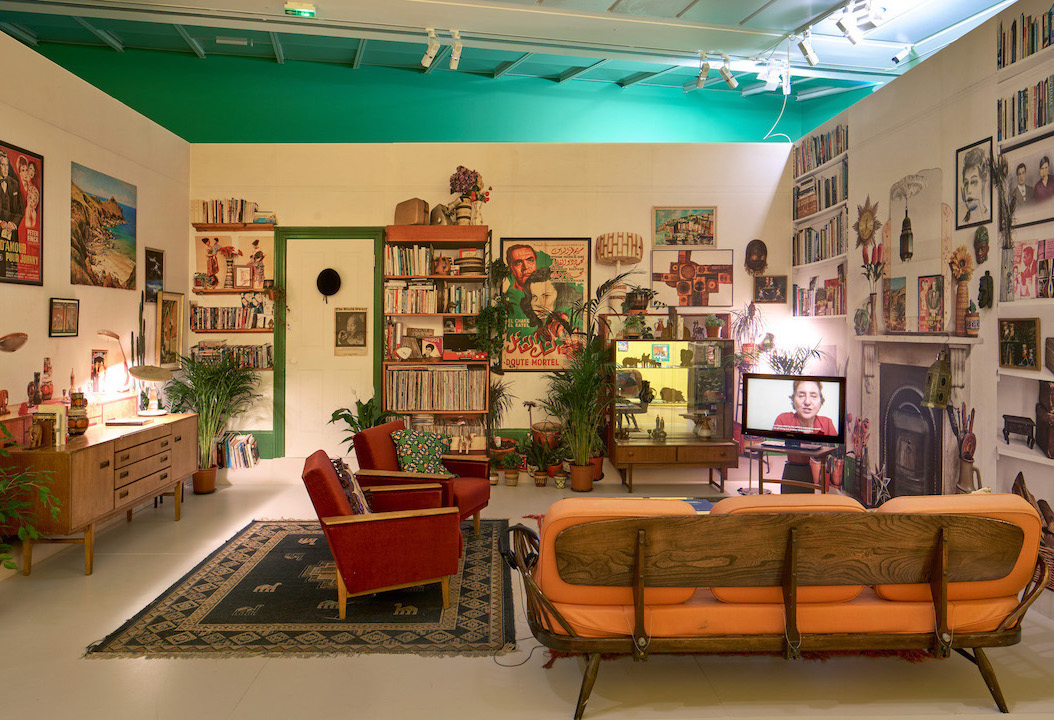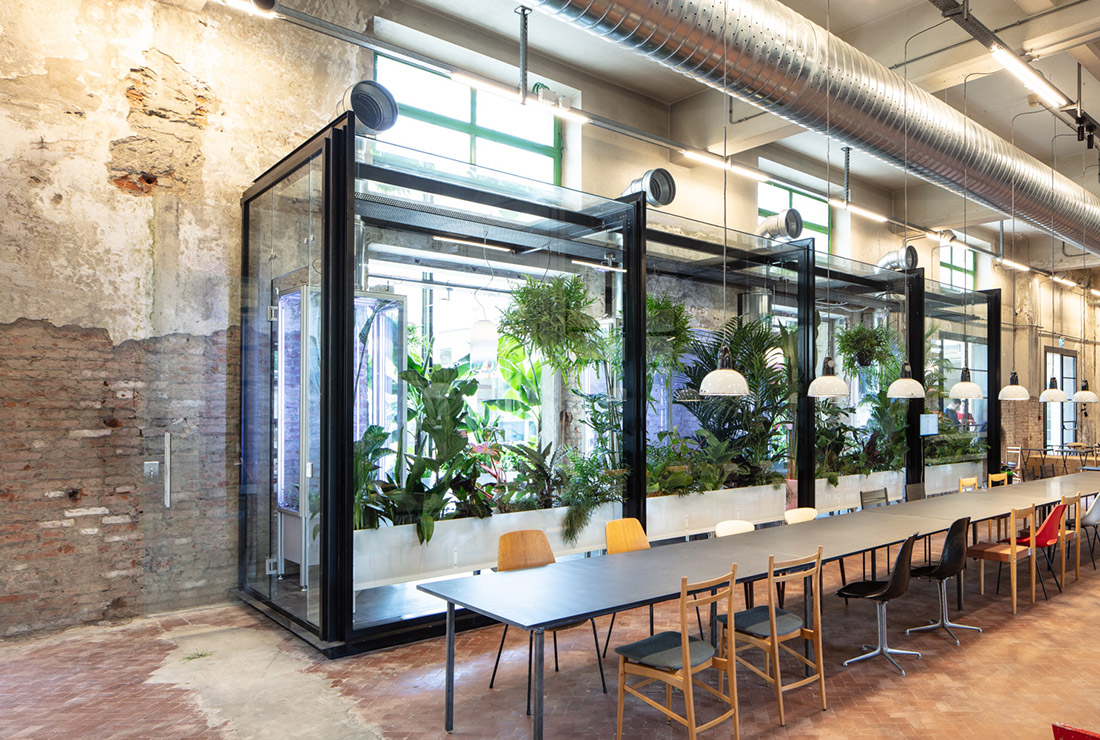Claire Tancons
The Cosmic Time of Biennials
- 17.12.2018
Sonia Boyce, MOVE (still), 2013, video. Presented at Göteborgs Konsthall as part of AnarKrew: An Anti-Archives, the 7th Göteborg International Biennial of Contemporary Art. Photo Attila Urbán
Perennial Occurrence and Human Recurrence
Perennially occurring large-scale exhibitions such as biennials, triennials, quinquennials, and decennials occupy a plurality of positions as leading institutions poised between global cultural diplomacy and local artistic development. With biennials in Honolulu, Venice, Istanbul and Sharjah, a triennial in New Orleans, a quinquennial in Kassel, and a decennial in Münster – to name only a few among the oldest, newest or rarest of each genre – 2017 provided insights into the spectrum of possibilities afforded by different spatialities and temporalities. Leave it to Venice, their European doyenne, to forgo politics altogether in the name of art for art’s sake, and give it to Pacific and Middle Eastern innovators to tangle with the macropolitics and geopolitics of place while Germany strived to bury the shadows of its ancient and recent pasts or to evacuate them altogether, putting the long historical view to an uncertain task and longevity to an unmemorable end.
Sonia Boyce, MOVE (still), 2013, video. Presented at Göteborgs Konsthall as part of AnarKrew: An Anti-Archives, the 7th Göteborg International Biennial of Contemporary Art. Photo Attila Urbán
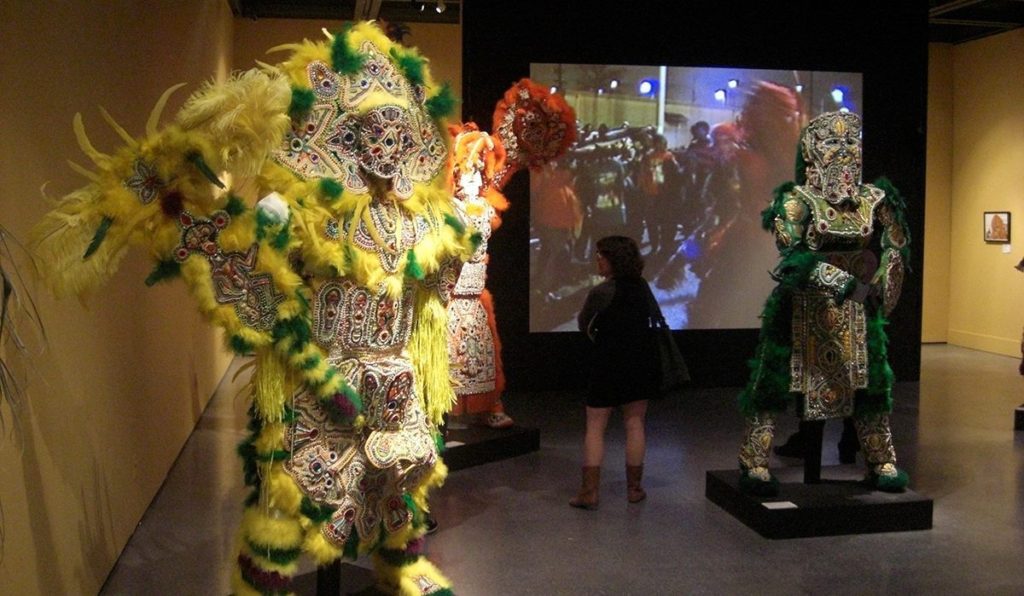
Victor Harris, Big Chief of the Mandingo Warriors, Spirit of Fi-Yi-Yi, 2009. Installation view of Prospect.1 New Orleans at the New Orleans Museum of Art, 2009. Photo: Claire Tancons
Prospect New Orleans, the first biennial1 – now a triennial – with which I became involved, in 2008, displayed the spirit of urgency befitting the aftermath of the unnatural disaster that was Hurricane Katrina. Instituted following the compounded failures of the FEMA-built levees and of the federal government, Prospect New Orleans was billed by its founding artistic director, Dan Cameron, as an engine of economic redevelopment through cultural tourism. As its first edition’s associate curator and first full-time staff on site, I witnessed the metaphorical might of Mark Bradford’s Mithra, a Noah’s Ark for the Lower Ninth Ward. This neighbourhood also welcomed Sebastian Preece’s infrastructural excavations in Tanto Tiempo, Nari Ward’s spiritual callings in the Diamond Gym: Action Network, and Wangechi Mutu’s domestic mending with Mrs. Sarah’s House. It is in the city’s worst-hit area, a blue-collar African-American community, and in its cultural tradition (on view in Mardi Gras Indian Victor Harris’ retrospective exhibition, which I curated at the New Orleans Museum of Art) that Prospect.1 New Orleans gained its lettres de noblesse as the art world’s first responder. But did it also provide the city’s cultural and artistic first responders a platform from which to amplify the volume of their efforts? A decade later, with the triennial as with the city, the debate has moved from recovery to sustainability, ensuring at least a measure of compatibility between local cultural politics and global artistic credibility.
Victor Harris, Big Chief of the Mandingo Warriors, Spirit of Fi-Yi-Yi, 2009. Installation view of Prospect.1 New Orleans at the New Orleans Museum of Art, 2009. Photo: Claire Tancons
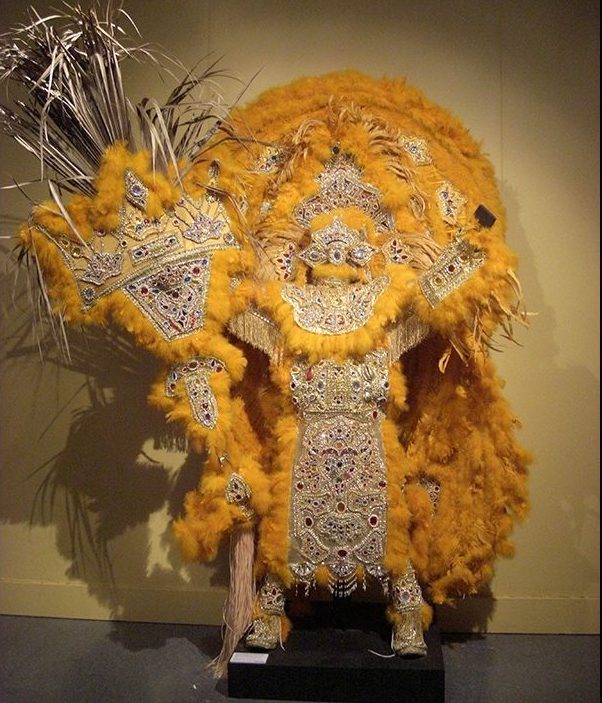
Victor Harris. Big Chief of the Mandingo Warriors, Spirit of Fi-Yi-Yi, 2009. Installation view of Prospect.1 New Orleans at the New Orleans Museum of Art, 2009. Photo: Claire Tancons.
An exemplary case of cultural diplomacy, the Gwangju Biennale was founded in 1995 to cement its host city’s status as a beacon for democracy after the May 18, 1980 uprising.2 As one of the curators of the Position Papers section of Annual Report (the thematic frame of the 2008 Gwangju Biennale under the artistic direction of Okwui Enwezor), I chose to delve back into the city’s momentous democratic history. I did so by mobilising the contemporary student body – as both living archive and heir to the courageous actions of the leaders of the 1980 demonstrations – at the location where their ‘Spring’ had culminated in a march. Now known as the May 18 Democratic Square, it is in fact a large traffic island branching into three main avenues. I used this site – which positions Gwangju’s ‘Spring’ along many other historic insurrectional seasons worldwide, foreshadowing the Arab world’s more recent ‘Spring’3 – as a locus for commemoration of past tests and for projection into democracy’s recent trials in South Korea. There and then, the biennial provided a platform for experimentation into the heretofore seldom used curatorial medium of processional performance, harnessing cultural memories in a mix of re-enactment, carnival, funeral and demonstration that was globally inflected, locally enacted and contextually specific. Festival-like in nature and out-of-the-box by design, directed by expansive political thinkers at best and by cultural provocateurs at times, biennials can support such prospective artistic endeavours.
Victor Harris, Big Chief of the Mandingo Warriors, Spirit of Fi-Yi-Yi, 2009. Installation view of Prospect.1 New Orleans at the New Orleans Museum of Art, 2009. Photo: Claire Tancons
As a guest curator for the second – and last – edition of CAPE 09, the Cape Town biennial (2009), a research curator for the first – or depending on whom you ask, second, and, by all accounts to date, last – Biennale Bénin (2012), and a member of the curatorial team for the (never inaugurated) Harlem Biennial, I have been supportive of the efforts of national, local and personal biennial initiatives that became short-term ventures. As variously motivated as their founders and supporters, it is these biennials’ deferred desires, rather than their failed attempts, that attest to the ideal and ideological commitments of the biennial field – whether they are liabilities or promises of success. Though they are often economically precarious and sometimes politically challenged, I strongly believe that biennials are as culturally necessary as they have become pervasive. The knowledge biennials produce, at once distinct from and complementary to other forms of cultural production, stretches beyond the scholarship that is often associated with academia and the museum. While the most research-driven and politically-minded biennials mine and contribute to this scholarly field, biennials are also beholden to the reoccurrence of cyclical and thereby cosmic, but also local and therefore quotidian, forms of knowledge production. This interpretation of the biennial phenomenon takes a long historical view on the domestication of art fairs – likewise a growing, recurrent phenomenon – and the secularisation of premodern festivals held with the kind of regularity known to bind humanity then as now. As a curator for the 7th Göteborg International Biennial of Contemporary Art (2014) under the artistic direction of Stina Edblom and Edi Mukha, I unearthed the city’s largely lost carnival history and the country’s mostly hidden festival tales, creating indoor and outdoor occasions for performance that afforded inward and outward reflections on cosmic time and human memory. My longstanding investment in the reappraisal of the processional exhibition form germane to fairs and festivals of lore may explain why I gain validation from the immediacy of impact that simultaneously stems from, partakes in, and escapes the experience economy. As a curator for the upcoming edition of the Sharjah Biennial (SB14, 2019)4, in the city and emirate of Sharjah, I look forward to harnessing the potential of this biennial to ‘leave the echo chamber,’ to paraphrase its title. Biennials have carved out a paradoxical position between heralding trends and trailing fads. Can biennials continue to reflect our transitory era and its cultural crossings? Can they manage to encapsulate and then release a view of the world that is at once more complex, cosmic and empathetic?
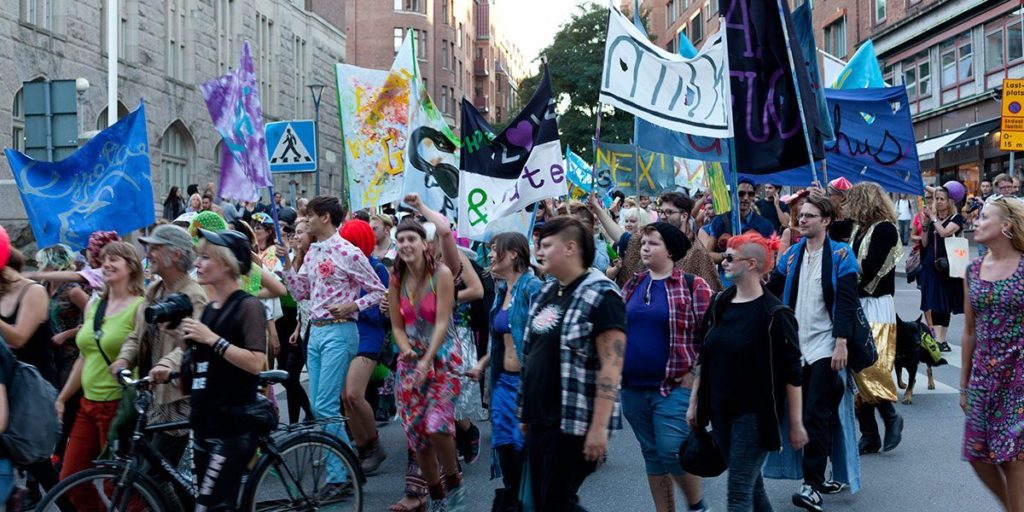
MYCKET and The New Beauty Council with Maja Gunn, Exclude Me In, 2013. Performance. AnarKrew: An Anti-Archives, the 7th Göteborg International Biennial of Contemporary Art, Göteborg. Photo: Attila Urbán
MYCKET and The New Beauty Council with Maja Gunn, Exclude Me In, 2013. Performance. AnarKrew: An Anti-Archives, the 7th Göteborg International Biennial of Contemporary Art, Göteborg. Photo: Attila Urbán
NOTES
1 In the aftermath of Hurricane Katrina (2005), Dan Cameron, who was then Senior Curator-at-Large at the New Museum, founded U.S. Biennial Inc. to organise a North American international contemporary art biennial in the vein of Venice, São Paulo, and Istanbul. He went on to organise the first two editions of the biennial, named Prospect New Orleans. Prospect New Orleans became a triennial with its fourth edition in 2017. 2 The Gwangju Biennale’s founding director Yongwoo Lee was a reporter covering the democratic uprising of 1980. He served as President of the Gwangju Biennale Foundation until 2014. The Gwangju Biennale will open its 12th edition in 2018. 3 I am referring here to events that began in Tunisia in 2010 and spread throughout the Middle East through 2012 – most notably to Egypt, where the revolutionary movement gained mainstream visibility – which became known as the Arab Spring. 4 Sharjah Biennial has been organised by the Sharjah Art Foundation since it was established in 2009 by Hoor Al Qasimi. For its 14th edition in 2019, it will be organised by three curators, Zoe Butt, Omar Kholeif and myself.
ABOUT THE AUTHOR
Claire Tancons is a curator and scholar invested in the discourse and practice of the postcolonial politics of production and exhibition. In addition to her work with international contemporary art biennials and festivals, she has curated for the Contemporary Arts Center New Orleans, Faena Art and Tate Modern. She is the recipient of an Emily Hall Tremaine Exhibition Award (2012) and of a Creative Capital Arts Writers Grant (2018).

